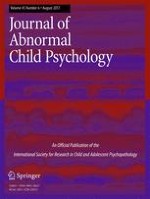12-11-2016
Cool and Hot Aspects of Executive Function in Childhood Obsessive-Compulsive Disorder
Gepubliceerd in: Research on Child and Adolescent Psychopathology | Uitgave 6/2017
Log in om toegang te krijgenAbstract
Aspects of executive functioning (EF) have been put forward as endophenotypes in obsessive- compulsive disorder (OCD) and meta-analyses support EF underperformance in adult samples. Childhood-onset OCD has been suggested to constitute a separate neurodevelopmental subtype of the disorder but studies on neuropsychological functioning in childhood OCD are limited. The aim of the present study was to investigate performance-based EF in pediatric OCD using observed and latent variable analyses. A case-control design was applied including 50 unmedicated children and adolescents with OCD aged 7–17 years of which 70% were female, 50 pairwise age and gender matched non-psychiatric controls (NP) and 38 children and adolescents with mixed anxiety disorders (MA). Participants underwent structured diagnostic interviews and assessment with a battery encompassing cool EF tasks of working memory, set shifting, inhibition, and planning, and hot EF tasks of decision making and dot probe paradigm affective interference. First, groups were compared on observed variables with multilevel mixed-effects linear regression and analysis of variance. Then the latent structure of cool EF was tested with confirmatory factor analysis (CFA) and groups were compared on the CFA scores. No significant differences between groups appeared on individual cool EF tasks. On the hot EF tasks the OCD group displayed significant interference effects on the dot probe paradigm OCD-specific stimuli relative to NP, but not compared to MA and no group differences emerged for decision making. In the CFA a one-factor solution showed best fit, but the groups did not differ significantly on the resulting latent variable. The present study does not support cool or hot EF impairments in childhood OCD.
